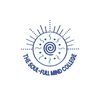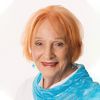
Paul Turner Publications & Osteopathy
Clicking on the Send Me Details Now button opens an enquiry form where you can message Paul Turner Publications & Osteopathy directly
Paul Turner Publications & Osteopathy
Servicing area
Ferntree Gully, VictoriaFocus areas
Paul has been practising since 1993 and has years of experience in Cranio-sacral and Biodynamic Osteopathy as well as multi-dimensional healing methods. This form of healing work is gentle and supportive in recovery from dys-function and in improving overall health and well being.
Products & Services:
- Assessment of physical and inner posture (i.e. of inner levels of being - texture, symmetry and rhythms) for patterns of health and dysfunction
- Traditional and craniosacral treatment techniques to help resolve acute, complicated and chronic health problems
- Self healing, awareness and rehabilitation exercises to optimise recovery
- Educational workshops and self healing groups, holistic research links, you tube resources, online courses, publications and articles to aid self healing, holistic awareness, assessment and treatment
Common problems that may respond well to this form of treatment include:
- Difficulties throughout pregnancy
- Infants and children with a wide range of problems such as colic, reflux, hyperactivity, some behavioural troubles and pain
- Any acute or chronic pattern of pain
- Headaches
- Whiplash
- Sporting and work related injuries
Because all aspects of being are addressed, this type of work may compliment other modalities of treatment by providing support in recovery from general life stresses, fatigue and some organ system dysfunctions such as irritable bowel, asthma, insomnia, menstrual pain, lymphatic congestion, etc.
As treatment is only one component of the healing process, Paul will also help you to learn effective methods of self healing and rehabilitation. This enables you to develop a deeper awareness about your own being and learn how to raise your own level of health. Paul also runs workshops for clients interested in self healing as well as practitioners with any health-science training on integrated postural assessment, self-healing and multidimensional assessment methods.
What Is Osteopathy?
Osteopathy is a “hands on” system of manual medicine.
It was founded by Andrew Taylor Still (1828-1917). His major realisation upon the key to health and disease occurred in 1874 which laid the foundations for what later was to become Osteopathy. The first school was opened in Kirksville, Misouri, America, in the fall of 1892.
Osteopathy is founded upon the following 4 principles:
1. The body is a unit
2. Structure and function are interrelated
3. The body has self-healing and self regulating mechanisms
4. Treatment is based on an understanding of the first three principles
Body Unity:
The body is comprised of numerous structural components, all of which need to be functioning in harmony (unity) for health to fully manifest. These components include all of the anatomy of the body, as well as mind and spirit.
Health = harmony, ease, function, and a balanced relationship between all components of the whole (unity of function).
Note: Although “Osteo” means bones, this does not mean only the bones are assessed and treated. A.T.Still used the bones as a framework upon which to build a sound understanding of the whole human unit. Osteopathy is wholistic and naturalistic. It adds to the bony framework an understanding of interrelationship between ligaments, fascia, muscle, nerves, vessels and all other organ systems of the body including the emotional, mental and spiritual.
Osteopathy, from one perspective, is knowledge of anatomy applied to healing diseases.
Structure and function are interrelated:
Structure can affect function and function can affect structure.
As long as the components are functioning in harmony with their structure, the body is balanced and health is maintained.
Health within a component of the whole means structure and function are in balance both with itself and in its relationship with the whole (it is balanced or compensating optimally in response to stresses elsewhere).
Dis-ease/dys-function means an imbalance in the structure/function relationship of any component with itself (structure does not equal function) and with other healthy components of the whole (this is a clue to primary dysfunctions).
Components that are not functioning in harmony with their structures are identified and addressed in an effort to return the body to unity. Thus Osteopathy assesses the reciprocal interrelationship between structure and function to determine what components of the whole need treatment.
Rather than purely treating tissues causing symptoms, an Osteopath seeks to identify key areas of dysfunction predisposing, maintaining or contributing in some way to the symptom picture. The natural recovery process will be slowed unless these components are addressed in treatment. Thus, an Osteopath assesses and treats internal patterns of dysfunction that are contributing to the overall symptom picture (cause to effect). The Osteopath also considers external components that may be contributing to the pattern of dysfunction, such as gravity, sport, work and environmental factors. In this way any internal and external components contributing to the problem can be included in the treatment plan and promote optimal recovery from illness or injury.
The Body has self-healing and self-regulating mechanisms:
In the absence of disease the body is self-regulating and maintains health. There is no self healing because everything is already healthy. With the onset of dysfunction the body will go into self-healing, regenerating and repair mode. It will send its healing energies/forces to the area in trouble and attempt to restore the balance in the shortest possible time frame. If it is unable to do this for whatever reason (i.e. mental, emotional and/or physical issues interfering with the inflow of health) the rest of the body will compensate in order to maintain overall, relative, equilibrium. Health is redistributed to areas that need it most in order to maintain the compensation pattern and to minimise stresses on any one area.
An imbalance in one area will therefore have far reaching effects on other areas of the body. Each tissue/area will respond to varying degrees depending on how each individual compensates. The body can cope with this adaptation without symptoms up to a point, beyond which the stressed tissues/areas get overloaded and function begins to break down and become dys-function. A person may accumulate many such dysfunctions over the course of a lifetime before his/her body gets to the point of “not coping”.
The body then begins to manifest symptoms in overstressed areas. Thus, it is easy to see that symptoms are merely the end effect of a long chain of compensations and adaptations in response (or reaction) to varying stresses over the course of a patient’s life-time. Dealing with symptoms alone will not address these predisposing patterns, if present, and “at best” helps to restore a person to a point of balanced compensation in response to all the preceding imbalances. In other words, it takes the symptomatic tissue (or tissues) off overload and allows it (them) to “cope” once again.
Treatment
Treatment involves a sound understanding of principles 1 – 3 above. From the above discussion you can see that Osteopathy defined more as a particular way a looking at health and disease rather than by any particular treatment technique. The guiding philosophy is common to all Osteopaths and allows the Osteopath to assess and treat the patient individually by taking into account each individual’s unique pattern of dysfunction.
The treatment techniques themselves, however, will vary depending on the interests, style and personal viewpoint of any particular Osteopath as well as the need of the tissues. These include a wide range of techniques such as: soft tissue massage, manipulation, articulation, lymphatic drainage, muscle energy technique, facial unwinding, functional technique, strain-counterstrain, cranio-sacral therapy, bio-energetic osteopathy, visceral techniques, stretching, self awareness and rehabilitation advice and other complimentary approaches.
Professional Membership
- Australian Counselling Association (ACA)
Nearby Practitioners
View all
Qt
Focus areas

Holistic Psychology
Focus areas

The Soul-Full Mind College
Focus areas

Annie O'Grady, Certified EFT Practitioner and Master Trainer
Focus areas

Beth Little - Mind and Body
Focus areas
Click on Send Me Details Now to get started
Send Me Details Now